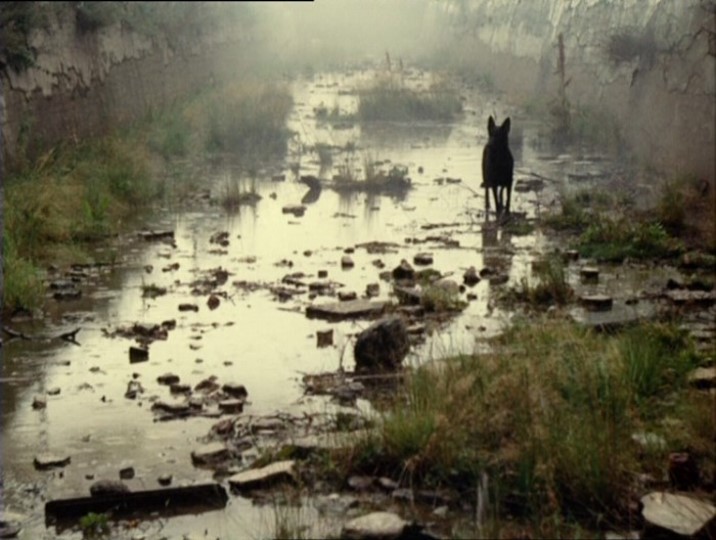From the Chicago Reader (September 15, 2000). It’s delightful to report that this film is now available in the U.S. from Icarus Films. — J.R.

One Day in the Life of Andre Arsenevich
Rating **** Masterpiece
Directed and written by Chris Marker.

Industry flacks claim that Hollywood movies have been dumbed down out of commercial necessity — they’re just giving audiences what they want. I don’t buy it. Audiences aren’t being offered intelligent movies, or at least those aren’t the ones getting multimillion-dollar ad budgets. This was especially the case during the past summer, though as usual, most of the press tolerantly excused the fare as standard silly-season stuff — as if we and not the industry and their advertisers were responsible. The flacks may love to shift the blame by telling us how dumb we all are, but their contempt finally may be causing a minor counterreaction.
Difficult, demanding, and incorrigibly serious art movies have been becoming more popular — though that may be less the result of a backlash against Hollywood than of a growing awareness that the makers of art movies are more respectful of the seriousness, intelligence, and spirituality of moviegoers. The first solid indication of this trend I noticed was the nationwide success of the Robert Bresson retrospective, which came to the Film Center in the spring of 1999 and drew enough crowds to warrant a partial revival of the series a few months later. Read more
Posted on Sight and Sound‘s web site 18 July 2013, and then expanded (by about 50%) at the request of Trafic‘s Raymond Bellour later that month for its French translation in Trafic #88, published in early December. This has also appeared in German translation in the September 2013 issue of Cargo, and a Spanish translation appeared in mid-August 2014 on Roger Koza’s web site. I’ve slightly updated the version here in a few particulars and added some photos.
I returned to Film.Factory for my fourth two-week stint to date on October 24, 2015, this time to teach a history of independent cinema around the world. — J.R.


First of all, what is film.factory?
It’s usually thought of and referred to as a film school that’s been recently set up in Sarajevo, housed at the Sarajevo Film Academy. But Béla Tarr, who created it, isn’t happy with this classification. He’d rather call it a workshop or, as its name suggests, a factory that produces films in which he serves as a producer. And he’d rather speak of the sixteen filmmakers he selected late last year from fourteen countries (Austria, the Czech Republic, France, the Faro Islands, Iceland, Iran, Japan, Mexico, Poland, Portugal, Serbia, Spain, the U.K., Read more
From the Chicago Reader (February 17, 1995). — J.R.

One of the strangest things about the elusive career of Otto Preminger (1905-1986) is that it remains elusive not because of the man’s invisibility but because of his relative omnipresence in the public eye. Though never as familiar as Alfred Hitchcock, he cut an imposing figure in the media, registering much more than either John Ford or Howard Hawks. Preminger was well known for his Nazi roles in Margin for Error (1943) and Stalag 17 (1953), for appearing in TV guest spots on Batman and Laugh-In and numerous talk shows, as a colorful player in Tom Wolfe’s Radical Chic, and for grabbing headlines as the man who defied the Production Code of the 50s and the lingering Hollywood blacklist of the 60s while grandly mounting well-publicized movie versions of best-sellers like Anatomy of a Murder, Exodus, Advise and Consent, and The Cardinal. Since he was one of the first of the high-profile American independents after the heyday of Griffith and Chaplin and moved from Hollywood to New York in the early 50s and never shifted his home base later, in most people’s minds he was more producer than director. Read more





